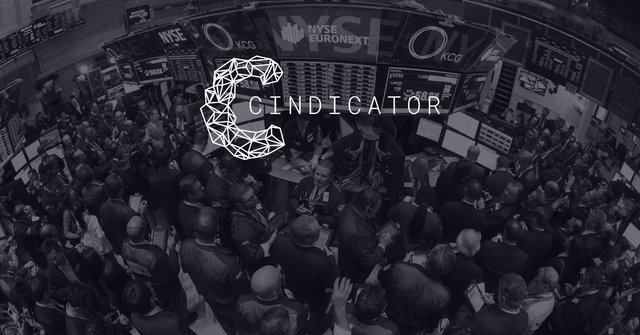From Turtle to Wolf: How Harnessing Cindicator’s Hybrid Intelligence Can Support a Superstar Trading Strategy

Note: This article was originally published on Medium in April, and subsequently won 'Best Trader Insight' in Cindicator's Insights Challenge
“Trading has taught me not to take the conventional wisdom for granted. What money I made in trading is testimony to the fact that the majority is wrong a lot of the time. The vast majority is wrong even more of the time. I’ve learned that markets, which are often just mad crowds, are often irrational; when emotionally overwrought, they’re almost always wrong.”
— Richard Dennis
I’ve recently finished reading Michael Covel’s classic book The Complete TurtleTrader. It recounts the story of legendary commodities trader Richard Dennis and his experiment with a group of market novices. Following a debate with a colleague over whether successful traders are born or made, Dennis recruited students from a variety of social and professional backgrounds to take part in his training. He gave them funds from his own portfolio and a set of rules he’d learned on the Chicago trading floors, and then left them to become trading superstars.
The experiment was deemed a success, spawning several generations of successful traders that applied Dennis’s unconventional systems and philosophies to out-perform many of the top traders on Wall Street.
Fast forward to 2018. The big investment firms have the talent, technology and guile to rule the markets, using every algorithmic and analytical advantage they can to gain maximum returns for their investors. Surely this environment is no place for novice traders to be risking their capital?
Meet Cindicator Bot…
Cindicator is a project designed to fuse the wisdom of the crowd (or, more accurately, its 90,000 geographically dispersed market analysts) with machine learning to provide time-sensitive indicators for both traditional and cryptocurrency markets.
Decentralised market analysis
To understand the genius of Cindicator, it’s important to understand the benefits of decentralised forecasting. If I were a private hedge fund manager, I could employ a group of Ivy League grads and pay them handsomely to study the markets and provide me with their best analysis on market events and price movements. This has obvious benefits; they are no doubt highly-intelligent and well qualified to compile quality fundamental and technical analysis on the assets the fund trades.
There are also drawbacks. Even the smartest analysts are subject to inescapable human flaws. In every piece of analysis, they fight innate preconceptions, prejudices and impulses that can cloud their judgement or guide them towards the (generally unprofitable) status quo. There are geographical hindrances too. Having the analysts located in established financial or technological hubs (such as Wall Street or Silicon Valley) can mean they are by default exposed to the same ‘group-think’ as other major market participants. A contrarian trading strategy can be more difficult to formulate when your analysts are following the same market narratives as your competitors.
With Cindicator, the dynamic is entirely different. They have assembled a decentralised ecosystem of analysts with diverse backgrounds, different professional experience, and differing market outlooks. They are motivated to contribute to the collective success, and incentivised to make their best forecasts through financial rewards for the accuracy of their forecasts. While the project is still in its early days, the collective approach to market analysis has the potential to outperform centralised teams of analysts, no matter the prestigious company banner under which they work. This will be especially the case as the neural networks underpinning Cindicator Bot’s AI grows in strength, allowing for back testing of models to improve the accuracy of predictions.

The turtle finds its bite
In Dennis’s experiment, the ‘turtles’ were so called as he had seen a group of turtles being bred in a tank on a trip to Singapore. Using this as an analogy for what he could achieve with his cohort of rookie traders, he set about arming them with the tools they needed to take on Wall Street’s greatest and win.
In the Turtle experiment, the novice traders were held to a set of strict rules to help them navigate the markets. These rules included:
- Focus on price movements rather than relying on information from TV or newspapers in making trading decisions
- Set clear parameters for buy and sell signals, e.g. turtles were taught to go long on a stock that had hit a 20 or 55 day price breakout (and short on the reverse)
- Plan your exit as you plan your entry
- Calculate volatility and use this to vary position size, i.e. the greater the volatility the lesser your position size
- Don’t ever risk more than 2% of your account on a single trade
- To get big returns, you need to be comfortable with large drawdowns. If a trade loses money, be ready to move on without feeling personally affected.
What was clear from the book was that Rich Dennis’s philosophy was all about what’s happening in the market right now. He didn’t care about past price movements or the fundamental aspects of the markets he and his turtles traded (he famously said he could trade a market without even knowing its name). All he cared about was following the trends the market is showing at that precise moment, and having proper risk management in place to get out of the trade if the breakout or breakdown turned out to be a false signal.
For a modern-day turtle, this wisdom still holds immense relevance for devising a consistent and well-disciplined trading framework. However, is it enough to take on the wolves of Wall Street and their high-frequency trading bots?

Turtle Power
For the modern trend follower, Cindicator Bot is the perfect companion. Over the course of each week, users receive a range of market indicators drawn from its analyst pool. These include:
- Weekly support and resistance levels; i.e. what is the price range that a particular asset will move within over the course of a week.
- Market event probability indicators; i.e. How likely is it that a particular macro event will occur that could impact market movements;
- Price level indicators i.e. how likely is it that an asset will trade above or below a specific price level
- Binary EPS indicators; i.e. will publicly-listed companies meet earnings forecasts
- ICO rankings; with hundreds of new crypto assets listing each month, which projects are likely to achieve the greatest growth based on their ICO price.
For a turtle trading in the moment, this is all essential information for planning exactly when to enter and exit a trade. As the old saying goes, it’s better to be out of the market wishing you were in than in the market wishing you were out. With Cindicator Bot you can avoid the trap of jumping in too soon, and instead make sure your trades are timed to capture the greatest upside.
Putting Cindicator Bot to work
Let’s take an example from the crypto market. In late March, Wanchain’s Wancoin was listed on Binance. Nearly six months on from its ICO, the coin had been subject to a great deal of hype and subsequently there was a lot of pent up buying pressure. So much so, the coin listed on the exchange on 23 March at around 10X its ICO price.
Making an immediate upward surge, a turtle trader may have felt the inexorable urge to dive it and ride the trend. On 26 March, Cindicator Bot provided a cautionary indicator as to whether Wancoin, then priced at 0.000486 BTC would trade above 0.00053 BTC by 6 April, i.e. would the price increase continue over the two proceeding weeks. The likelihood of such an outcome was forecast at only 22.74%.
Following the release of the indicator, the price of Wancoin actually declined and fell to 0.0003980 BTC, before resuming its upwards trajectory. On 6 April, it rose to 0.0004749, before beginning a surge on 7 April. It hit a high for the month of 0.0008550 (115% profit) on 13 April. A turtle who therefore heeded Cindicator Bot’s advice and held off on the trade and picked up the dip could have more than doubled their money in only 10 days.

Ahead of the wolf pack
For a newcomer, the markets are undoubtedly daunting. Sudden and often counter-intuitive movements can bring riches or ruin depending on which side of the trade you’re on. Even the most experienced and battle-hardened trader will sometimes be in the red, yet will have the right strategy and risk management set up to make sure the odds of victory remain in their favour over their preferred time horizon.
The greatest threat to the novice investor comes from not knowing how to react to uncertainty. What’s the right time to get in? When should I get out? What if the market turns against me? Market success is all about decision making, and the trader with the best information to support their trading hypotheses will not only be able to make more confident buying decisions but also to install a more prudent risk management framework.
Utilising Cindicator Bot, a turtle trader is able to harness the dispassionate wisdom of a decentralised and geographically spread pool of analysts to make significantly better decisions than could be made feeding off of one’s own emotions and prejudices. The trend may be your friend, but Cindicator Bot is your true market companion.
Coins mentioned in post: